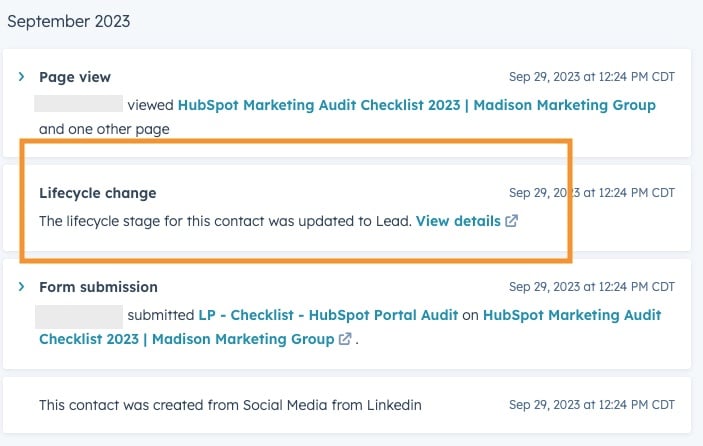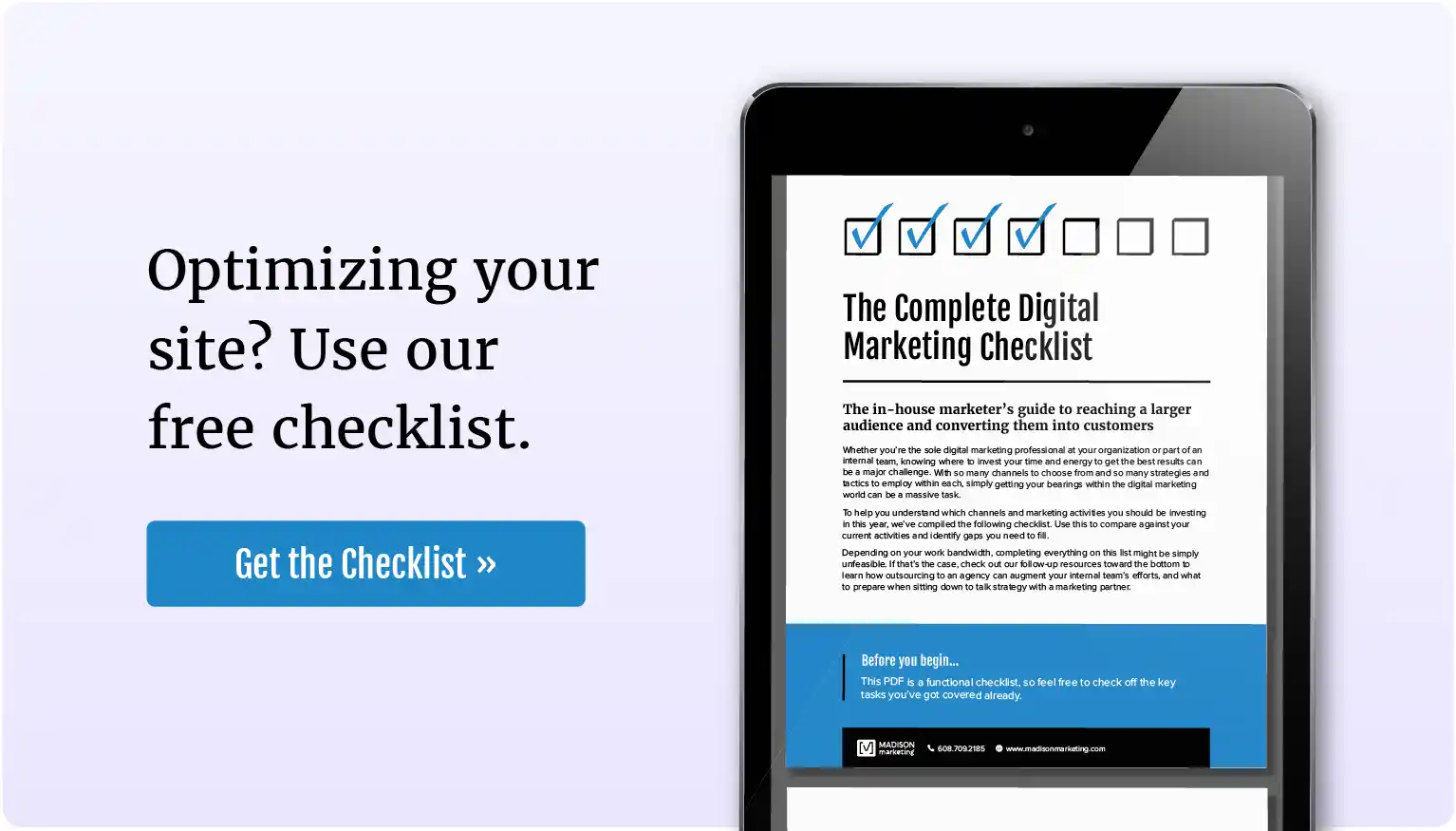You’ve decided to invest in paid search to try to get some fast lead generation results for your B2B.
You’ve set up your campaign, penned some ads, and added extensions to improve click through rates.
But there’s something missing: how are you going to track progress toward your campaign goals and demonstrate to the C-suite whether you actually made money?
Enter Google Ads KPIs.
What are KPIs?
Key performance indicators (KPIs) are metrics used to measure the performance of your marketing campaigns.
KPIs vs. metrics
KPIs are metrics that help you determine your progress toward and completion of goals. While all KPIs are metrics, metrics are only KPIs when you use them this way.
How to choose the right Google Ads KPIs
So, how do you choose the right KPIs for your campaign? Here are few factors to consider:
What are your goals?
Each KPI should directly tie to one of your campaign goals.
How will you measure progress?
There are different types of KPIs, including “leading” and “lagging” indicators.
Leading KPIs forecast results. They help you determine if an approach is likely to work or has already started to work. For example, you might measure expected lead value to see if you're on track to hit a revenue-based goal.
Lagging KPIs tell you how much progress you’ve made. For example, campaign-assisted revenue generated tells you how much total revenue your ad campaign generated.
It’s usually smart to track both types.
How will you measure goal completion?
Some KPIs can tell you whether you’ve completed your goal or not. For example, if your goal involved getting “2X ROI,” ROI would be this KPI.
Potential KPIs to measure the success of your Google Ads campaigns
PPC campaign ROI report/ROAS
If you're handling your PPC campaigns yourself and your only direct expense is ad spend, we recommend calculating Google Ads return on ad spend (ROAS).
But if you do have agency fees or additional costs you'd like to factor in, calculate your PPC ROI instead.
How to measure Google Ads (PPC) ROI
PPC-generated revenue/(PPC ad spend + PPC costs) = PPC ROI
How to measure Google Ads ROAS
PPC-generated revenue / PPC ad spend = PPC ROAS
Google Ads attributed sales
This is simply the number of sales that resulted from leads generated by your PPC campaign.
How to measure it
A simple way to find out how many of your leads came from ads is to use a CRM and/or marketing platform that automatically tracks of your lead sources, including paid search.
You can then use that data to generate reports that display only those deals that were generated by PPC.
Platforms like HubSpot even enable direct Google Ads integration and in-platform campaign management, enhancing and simplifying reporting capabilities.
Leads generated (total leads, MQLs/SQLs, phone calls)
 Source: HubSpot
Source: HubSpot
How to measure it
A CRM can help you automatically track and report on leads and the information associated with them.
HubSpot, for example, can be configure to automatically assign and track lifecycle stages such as marketing-qualified and sales-qualified leads (MQLs and SQLs) according to the criteria you specify.
This makes it easier to report on the number of qualified leads your campaign generated.
As for the total number of leads and phone calls, you can also find this data directly within the ad platform via the Conversions tool.
What are the main metrics for Google Ads that measure ad or keyword performance?
How about metrics that measure the real-time performance of individual ads?
These metrics are not necessarily KPIs, but instead help you determine which ads or keywords to tweak, pause, or leave alone to maximize your return on ad spend (ROAS).
Click-through rate (CTR)

Source: Google Ads
Click through rate measures the percentage of impressions that result in a click. This can offer clues about whether your ad copy is sufficiently compelling, or whether the keyword you are bidding on is being used by a qualified audience.
You're probably wondering what a good CTR looks like.
It depends on factors like your industry, the channel you're using, ad format, and ad position. Here are a few benchmarks:
- Average B2B paid search ad CTR: 5.17%
- Average B2B display ad CTR: .46%
- Average business services paid search ads CTR: 5.11%
Here’s how CTR is calculated:
Clicks / Impressions = Click through rate (CTR)
For example, say your ad received 10,000 impressions and 100 clicks. Your CTR, then, would be 1%.
100/10,000 = 0.01, or 1%
If you're evaluating ad performance, a click through rate rate of just 1% would be a sign you need to edit this ad or start over. Google is serving it a lot, but people aren’t interested enough to click. Figure out why and your ad budget will be the better for it.
Conversion rate (CR)

This metric measures the rate at which clicks result in conversions, or how many people who click on your ad go on to convert.
This helps you diagnose problems with your landing page and offer. For example, if your CTR is really high but your conversion rate is really low, you might take another look at what you're offering and where you're sending leads to convert.
One common problem we often see is that many companies send Google Ad clicks to their homepage. In our experience, sending Google Ads traffic to a dedicated landing page (used only for Google Ads traffic) that is well-aligned with the keywords you're bidding on and the ad copy you're using results in a higher conversion rate.
Cost per conversion (CPC)

Cost per conversion tells you the average cost per ad conversion.
It’s useful to help you evaluate your return on ad spend and make adjustments if you start spending too much without generating significant lead volume.
Impressions

This metric measures the number of times someone is able to see your ad or keyword.
It’s useful for determining how many times Google is showing your ad. Some ads show more than others for a variety of reasons, including:
- There’s nothing about the ad that limits or discourages Google from showing it
- The copy and keywords you’re targeting align with what people are searching for
- You’re paying a competitive amount to have the ad shown
- Your ad is of good quality
In the case of keywords, impressions can also give you an idea of how often different keywords are being searched with the caveat that the factors listed immediately above may skew that data to some extent.
Learn more specifics.
Ad strength

This metric measures the quality of your ad based on a variety of factors. It is calculated by Google in real time and is displayed in each ad as you write it.
It's affected by factors like:
- Use of target keywords in ad headlines and descriptions
- Copy variation in headlines (not repeating certain words or phrases in every headline)
- Copy variation in descriptions
To improve your ad's score, refer to the checkboxes to the right and click "view ideas". Monitor the recommendation to the left of the score as well to see what google thinks is the number one missing ingredient.
Final thoughts
Tracking the right KPIs helps you better demonstrate the effectiveness of your campaigns to the C-suite as well as monitor progress toward your goals so you can make real-time tweaks.
Topics: Strategic Analytics




.jpg?width=400&name=5f999055d7a06183d0d821d6_pexels-lukas-590020%20(1).jpg)

